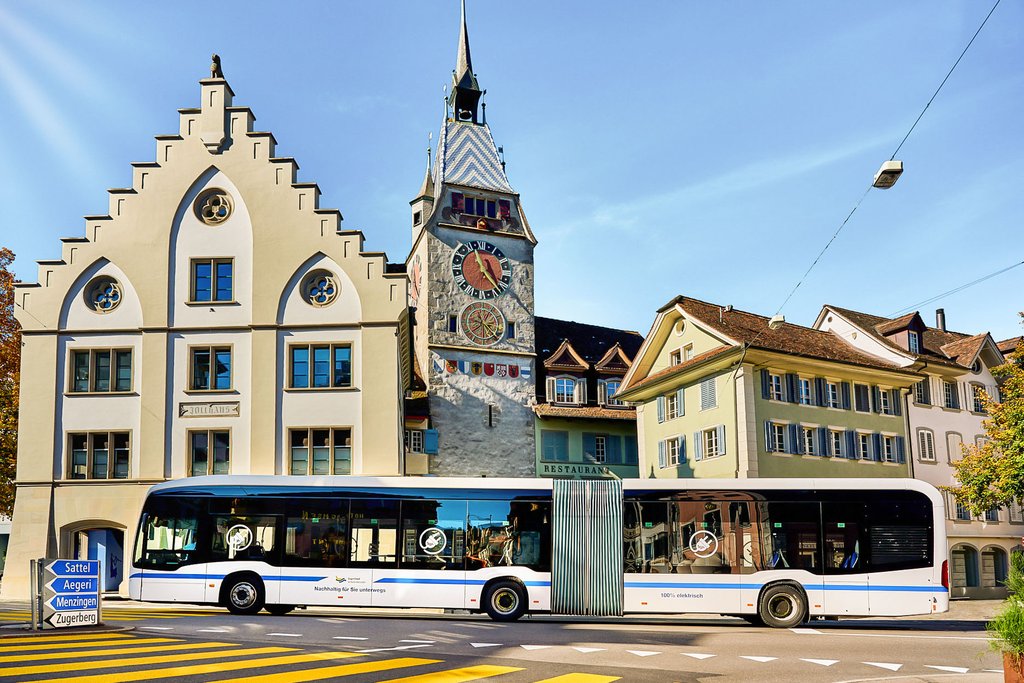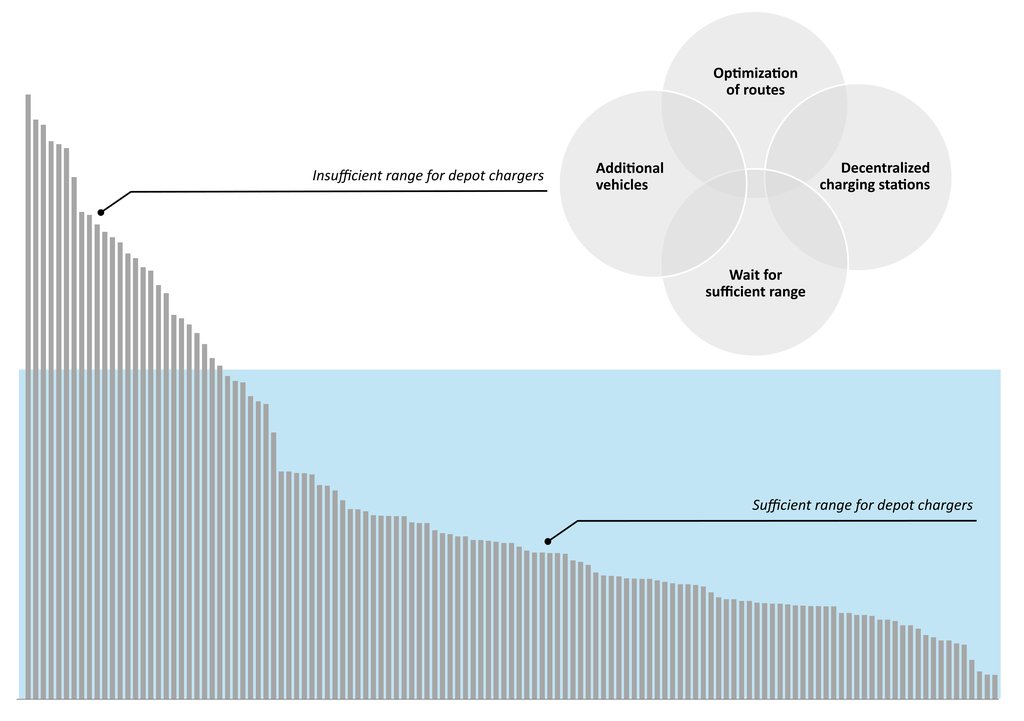Zugerland Verkehrsbetriebe AG (ZVB) wants to fully electrify its fleet by 2035. To ensure that they are still on track with the changeover, the ZVB commissioned INFRAS to conduct a technology study on the status of fossil-free bus operations and an assessment of their planned e-roadmap.

The market and technologies for fossil-free drives are developing very dynamically. This is a challenge for transport companies like the ZVB, which are in the process of electrifying their fleet. Around a quarter of ZVB buses are currently battery-powered, and the aim is to have all of them by 2035. «In the course of the changeover, new questions arise in view of the rapid technological developments», says Roberto Bianchetti, e-mobility expert at INFRAS.
To ensure that they are still on the right track economically and technologically, the ZVB have had their e-roadmap reviewed. To this end, INFRAS determined the status of technical and market developments for fossil-free bus operation, analysed relevant adjustments to depot management and assessed the ZVB’s planned changeover in this respect.
Battery buses are the most promising solution
In the study, INFRAS analyses the technological development status of all fossil-free drive technologies, including battery buses, hydrogen buses, e-fuels and biofuels. Conclusion: Battery buses are still the most suitable option for minimizing CO2 emissions in public transport.
When it comes to recharging electric buses, the focus is on depot chargers or combi chargers, as they enable longer ranges and therefore longer runs. In both concepts, the buses are equipped with large batteries that are either charged only in the depot or both in the depot and at selected stops using pantographs.
E-roadmap remains realistic
The analysis with the INFRAS e-bus tool has shown that the majority of ZVB routes can be electrified with depot chargers by 2035 without having to rely on other fossil-free drive technologies. The remaining long routes can also be electrified through optimised deployment plans, additional vehicles and decentralised charging stations for combined chargers (see figure). The ZVB’s planned e-roadmap focussing on depot chargers is therefore feasible from today’s perspective and battery charging via the vehicle roof (panto-up) makes sense regarding the desired automation of the depot.

New challenges
The switch to e-mobility brings with it several challenges – particularly in terms of adapting the infrastructure and the increasingly complex depot management. The latter is made more difficult by the fact that both diesel and electric buses with different ranges must be operated in parallel until the switchover is complete. In addition, the electrification of rail replacement services poses a further challenge. «In our study, we focused on challenges that will arise after the pilot phases during further decarbonisation and will become more important during the complete transition. To this end, we identify key solutions to support the ZVB in its successful implementation», says Bianchetti.
Further INFRAS studies related to the topic


